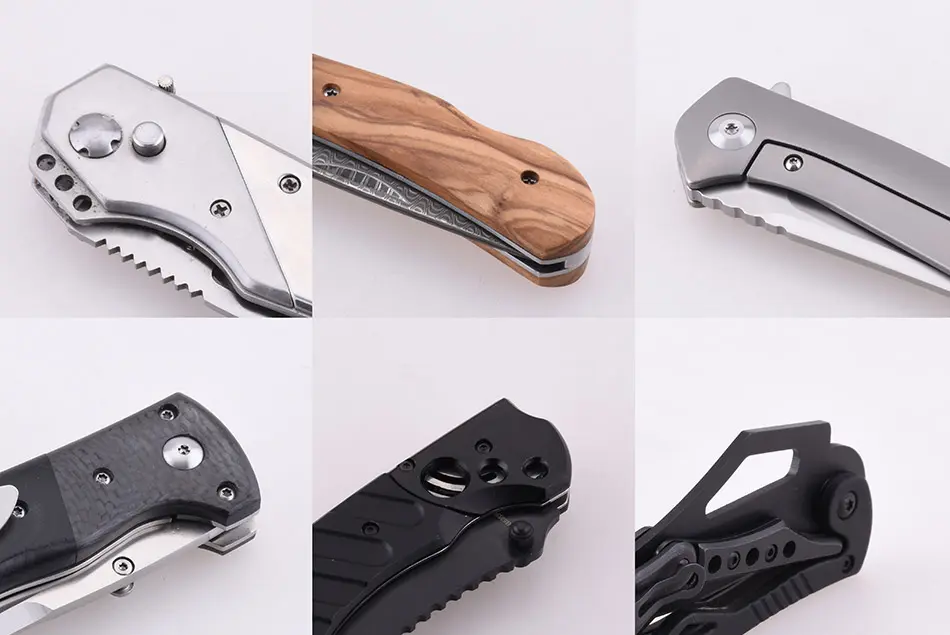Knives are not toys; even the most skilled users may inflict harm on themselves with careless handling. Since pocket knives may be so dangerous in the wrong hands, they are often regulated as weapons in many countries.
One reason why you’re told to keep them out of the reach of kids is because of this. But how well-versed are you in the proper use of a pocket knife?
We’ll answer that question as we examine some basic safety rules every knife owner should observe.
Open Away From Face
Snap-open pocket knives are quite convenient. The blade is unlocked by sliding the lock to one side, and if you do it too near, the force might cut your face.
If you’re opening your pocket knife with one hand, it’s very important to keep your eyes on the blade the whole time. No mishaps will occur if you maintain your eyes on the knife and keep it far away from your face as you cut.
Watch Your Fingers
Every time you reach for your pocket knife, your hand will naturally swerve out of harm’s path. However, you should always be careful since the blade might be too quick for you and sever anything.
Always keep an eye on your fingers while shutting, opening, or using the knife, and make sure the line of action is well within your control and not too near to the fingers.
Cut Away from Your Body
It is common practice to use a lower anchor or support as a fulcrum while employing a knife since this provides a point of leverage for the cutter to penetrate the target material. Always use the edge away from you while cutting with a pocket knife.
Make a protective zone where the furthest point of the blade can’t reach you. If you were to ever come into contact with the force being employed here, it may have catastrophic consequences.
Understand Your Knife
There is a good reason why knife shops keep their pricing the same for decades at a time. Get comfortable with the knife by using it often. All three of those things—the heft, the duration, and the roughness—can be overcome with time and adaptation.
This improves your overall knife control every time you use it. That can’t be done with any other knife, especially in such a hurry. Spend more time with your knife and you’ll get to know it better.
Keep your Sharp Knife
The common belief that a knife with a sharp edge poses a greater risk than one with a dull one is unfounded.
What is true, however, is the exact reverse. One benefit of using a sharp knife is that it allows for effortless cutting; all you have to do is keep your eye on the blade’s cutting edge.
On the other hand, using a dull knife will require you to use unneeded force, which greatly increases the likelihood that you may get an injury.
Wear Protective Gear
Pocket knives often come with handles that are meant to offer greater grip, which gives the user an advantage in terms of both grip and control while using the knives with their bare hands. However, there are times when it’s important to wear safety gloves.
For example, knives may become very difficult to wield in the winter because they have frozen solids. Protect your hands against pocket knives by always donning gloves while handling them.
Store them Well
The best way to guarantee that your pocket tooling knives survive as long as possible and are always ready for use is to keep them in a dry, airtight container.
By keeping the blade closed, you reduce the risk of injury from corrosion and malfunction due to exposure to moisture.
Your knife should also never be filthy when stored. Before putting it back in its case or a similar container, be sure it has been cleaned and dried thoroughly.
Having it safely stored away is also the only way to ensure that kids don’t get into it.
Use Proper Knives
There is a wide variety of styles and configurations available for pocket knives.
Every one of them serves a distinct function, and the design of the knife as a whole was conceived with that activity in mind from the beginning.
Consequently, while shopping for a knife, you should keep your intended use in mind so that you don’t wind up utilizing the incorrect knife for the appropriate task.
To cut up a large animal, for instance, you would need a sturdy knife with a fixed blade since you couldn’t possibly use a pocket knife.
Use The Right Proper Cutting Techniques
The form of the blade, in addition to a number of other elements, is one of the primary determinants of the direction in which a cut will be made.
As a result, it is important to be familiar with the shape of your pocket knife so that you can effectively utilize it.
It is not possible, for instance, to use a knife designed for stabbing to cut a rope or vice versa.
If you do not use proper cutting skills, you put yourself in danger of sustaining an injury since the knife might easily get away from you. In the long term, the knife will suffer harm as a result of this.
Takeaways
Having a pocket knife is just the beginning of the challenge; the real test is mastering how to use it effectively without causing any cuts or wounds to yourself.
It will take some time for you to get used to having a blade in your hands, but ultimately you will be able to wield it as well as a professional would. Visit our website at your earliest convenience if you are interested in learning more about pocket knives.
Shieldon is a specialist in the production of pocket knives, and they have years of industry expertise.
You can also follow us through the following ways:
https://www.facebook.com/ShieldonCutlery
https://www.instagram.com/shieldon_knives_and_tools/
https://www.youtube.com/channel/UC_Dz–HODWHFY4AaUF0z11Q
https://twitter.com/Shieldonknives1/
https://shieldonknivesandtools.tumblr.com/
https://www.linkedin.com/company/72285346/
https://www.pinterest.com/shieldonknivesandtools/
More video introductions:








